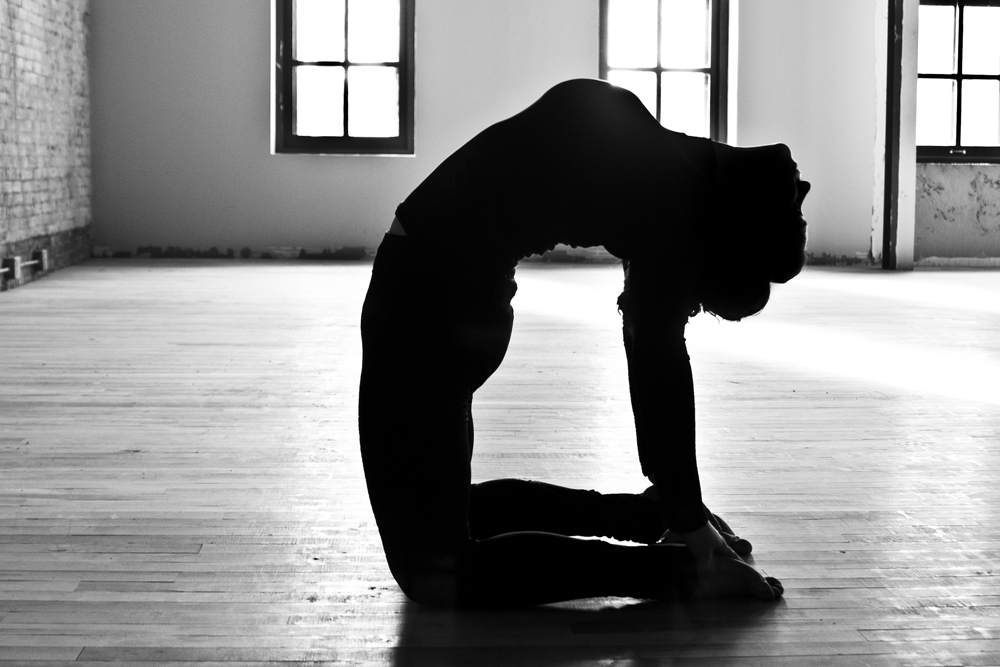While some believe that yoga could have originated as early as 10,000 years ago, it’s hard to pinpoint exactly when since there is no documented evidence.
The earliest documentation of the practice was found during excavations of the Indus Valley Civilization of the Bronze Age (3300–1300 B.C.), or rather, the modern day areas of Pakistan and India. What archeologists found were seals depicting a figure seated in a traditional yoga pose of sukhasana. This tells us that, at the very least, humans were delving into the art of meditation and relaxation through simple yoga postures.
There is no one definition of what yoga is since it has evolved into so many different things over the centuries. Many people believe that yoga is simply a series of poses, twists and turns that strengthen and stretch the body, but there is much more to it than that.
The word yoga is derived from the Sanskrit word yuj, which translates roughly into yoking, or a team of oxen. It is said that the basis of yoga is to acquire a union between body, mind and spirit. This union can be achieved through meditation as well as physical movement of the body through stretching and poses. The Yoga Sutras, one of the oldest texts regarding yoga, gives us insight into the philosophy behind the practice by introducing us to the eight limbs of yoga. Each limb relates to an aspect of achieving a healthy and fulfilling life, and each builds upon the one before it. Together, they bring a wholeness and richness to life that many aspire to.
The eight limbs of yoga
The first limb is called yama, and this deals with how we should relate to other people in our day-to-day lives. The yamas are moral directives intended to guide the individual’s behavior toward others in a positive direction. Ahimsa is the first branch of the yamas, and it urges the practice of nonviolence. Satya represents truthfulness, asteva discourages stealing, aparigraha tells us not to covet, and lastly there is brahmacharya, which encourages chastity (whether it be through celibacy or through the control of one’s sexual impulses).
Since these are ancient traditions, modern day yogis may feel that some of these are outdated. However, there is a truth to them that I feel is timeless, especially when it comes to how we treat others around us.
While the yamas direct one’s behavior toward others, the niyamas, or the second limb of yoga, describe how to act ethically toward oneself. Together, these two sets of rules are meant to guide one to a moral lifestyle. Much like the yamas, the niyamas have five branches within the practice. Saucha encourages cleanliness—taking care of oneself physically. Santosa is contentment with oneself as well as showing yourself love. Tapas is sustained practice, which encourages discipline and loyalty to not only your yoga practice, but to all other positive practices within your life. Svadhyaya is self study, self reflection and the ability to analyze and understand oneself. And finally, isvara pranidhana is the surrender to a higher power, whether it be God, the universe or otherwise. While some believe that surrendering to a higher power means relinquishing control of one’s life, in yoga it simply means that you are able to rely on something outside of yourself for guidance, strength and encouragement.
The third limb of yoga is the asana, and it centers on the physical practice of yoga, mainly the poses and stretches. While the original definition of asana in the Yoga Sutras was “seat,” the physical manifestations that have evolved over the centuries have brought it to what it is today.
No practice is complete without the incorporation of breath work, or pranayama, the fourth limb of yoga. Depending on what you are trying to achieve, there are many different breaths you may use to get to that state. It is strongly believed that the breath can alter our moods greatly, strengthen and center us.
Pratyahara, the fifth limb, is the practice of withdrawal of the senses, where you are able to shut out the exterior world and simply concentrate on what is happening within yourself. Dharana, the sixth limb, is about concentration—being able to focus on one thing without being distracted by external or internal influences. It is the idea of giving one’s attention to one thing and one thing alone.
Dhyana, the seventh limb, builds upon dharana since it has to do with meditation and the act of focusing on a single thing for a long period of time without becoming distracted by thoughts, feelings or the outside world. Finally, samadhi is the eighth and final limb of yoga, and it translates into enlightenment. This is where you are able to merge yourself with the universe through deep meditation and transcend into another sphere of being.
All these limbs require a great deal of practice and dedication, but the results found in the discipline required to get there are highly rewarding. The idea behind yoga is to find a more fulfilling, healthy, grounded and meaningful way of living. Every aspect of the practice is meant to address your life in different ways and drive you in the direction of finding contentment within yourself and the environment around you. Namaste!






